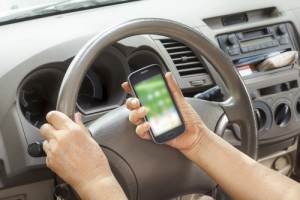Google got itself all over the media last week when it put up a video of people trying out its new self-driving car. It’s a great story, and the commentators who are into techy stuff waxed lyrical about how it could give mobility to the elderly or disabled, and just generally free up time for us all. But I’ll bet most people were thinking ‘yeah, but…’ – that’s years away, because who’s going to trust a computer to drive a car, given how often the ones on our desks crash?
What fewer people pointed out was that the driverless car won’t be a leap of faith, it’s a series of small steps – and we’ve already taken a lot of them.
Get on a motorway, and plenty of people put on cruise control. Increasingly that’s augmented by systems that warn you if you’re going out of your lane, and now systems that stop you getting too close to the car in front. A European Union-funded project is working on using similar technology to allow ‘platooning’ of lorries, i.e. allowing them to follow each other very closely, thus saving a large amount of fuel.
OK, so a motorway is a simple driving environment, but at the slower end, a number of cars will now park themselves for you. And several companies are working on systems that will take over the car to prevent collisions (Volvo being the main one, of course).
Software reliability is an issue, of course, but it’s one the automotive industry has been dealing with for years. The engine of every modern car is entirely reliant on computer hardware and software to run, and failures in that software could cause serious accidents, but it doesn’t. That’s because, let’s face it, you apply a very different set of criteria if a crash is, well, a crash, rather than if it’s just an inconvenience.
It won’t be long before a significant proportion of drivers have experienced vehicles that pretty much drive themselves, at least for some of the time. It’s not hard to envisage a time when motorway driving could mean hitting cruise control, and then getting out a good book. And urban driving will soon involve a super-satnav guiding you precisely around the streets, safe in the knowledge that if you don’t spot that cyclist, the car won’t let you hit her anyway.
As we drive down the current road, we’re just steadily handing more and more control over to the car. Eventually, the reality will be that the car looks like it does now, but the manual controls are really just there as a back-up, for us to take over if something does go wrong, or just if we feel like it. The biggest barrier to a lot of this, and particularly removing the steering wheel altogether (as in Google’s car), will be legal, given laws such as the Geneva Convention on Road Traffic (1949) which states that drivers “shall at all times be able to control their vehicles”.
However, our technology is getting better at an exponential rate, while human drivers… how to be charitable… are certainly not improving as fast. So whether the legal issues to allow self-driving cars take years, or more likely decades, to sort out, eventually the really tough question will be this. At what point will we view humans controlling cars as the really risky option?
References:
Google’s YouTube video here:
https://www.youtube.com/watch?v=CqSDWoAhvLU
Longer article exploring the legal issues here:
http://www.theverge.com/2012/12/14/3766218/self-driving-cars-google-volvo-law


Fantastic post, Dom.